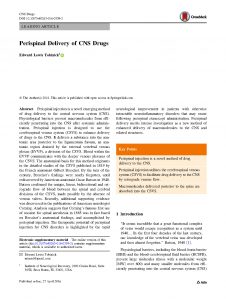News Release, October 8, 2018: The Australian Government will invest $1 million to improve recovery and rehabilitation and help stroke survivors back to work. The Government package includes $750,000 specifically designated for funding a clinical trial of the innovative Perispinal Etanercept Stroke Treatment in Australia. “The project will enable more Australians of working age who have had a stroke to access new innovative and cutting edge treatment options to aid their recovery.”
Perispinal etanercept for treatment of chronic post-stroke neurological dysfunction is a treatment method invented and developed by Edward Tobinick M.D., Medical Director and Founder of the Institute of Neurological Recovery.
More at this link: http://www.health.gov.au/internet/ministers/publishing.nsf/Content/health-mediarel-yr2018-hunt134.htm

The Hon Greg Hunt MP, Minister for Health, Australia
We were so pleased that Jan returned to visit us on March 11 from Kennett, Missouri with her husband. She is holding the story the Daily Dunklin Democrat had printed on February 17 about her rapid improvement after treatment. To read the whole story please click on the following link to the webpage of the Daily Dunklin Democrat (click here).
 May 2, 2016 (Los Angeles, Boca Raton): On April 27, 2016, the peer-reviewed review article entitled, Perispinal Delivery of CNS Drugs, by Edward Tobinick MD, published online in the scientific journal CNS Drugs. The abstract of the article states:
May 2, 2016 (Los Angeles, Boca Raton): On April 27, 2016, the peer-reviewed review article entitled, Perispinal Delivery of CNS Drugs, by Edward Tobinick MD, published online in the scientific journal CNS Drugs. The abstract of the article states:
Perispinal injection is a novel emerging method of drug delivery to the central nervous system (CNS). Physiological barriers prevent macromolecules from efficiently penetrating into the CNS after systemic administration. Perispinal injection is designed to use the cerebrospinal venous system (CSVS) to enhance delivery of drugs to the CNS. It delivers a substance into the anatomic area posterior to the ligamentum flavum, an anatomic region drained by the external vertebral venous plexus (EVVP), a division of the CSVS. Blood within the EVVP communicates with the deeper venous plexuses of the CSVS. The anatomical basis for this method originates in the detailed studies of the CSVS published in 1819 by the French anatomist Gilbert Breschet. By the turn of the century, Breschet’s findings were nearly forgotten, until rediscovered by American anatomist Oscar Batson in 1940. Batson confirmed the unique, linear, bidirectional and retrograde flow of blood between the spinal and cerebral divisions of the CSVS, made possible by the absence of venous valves. Recently, additional supporting evidence was discovered in the publications of American neurologist Corning. Analysis suggests that Corning’s famous first use of cocaine for spinal anesthesia in 1885 was in fact based on Breschet’s anatomical findings, and accomplished by perispinal injection. The therapeutic potential of perispinal injection for CNS disorders is highlighted by the rapid neurological improvement in patients with otherwise intractable neuroinflammatory disorders that may ensue following perispinal etanercept administration. Perispinal delivery merits intense investigation as a new method of enhanced delivery of macromolecules to the CNS and related structures.
The full-text of the article is available by clicking on the link below:
Perispinal Delivery of CNS Drugs. Edward Tobinick MD. CNS Drugs. 2016:1-12. do:10.1007/s40263-016-0339-2, published online 27 April 2016. (Download free full-text PDF).